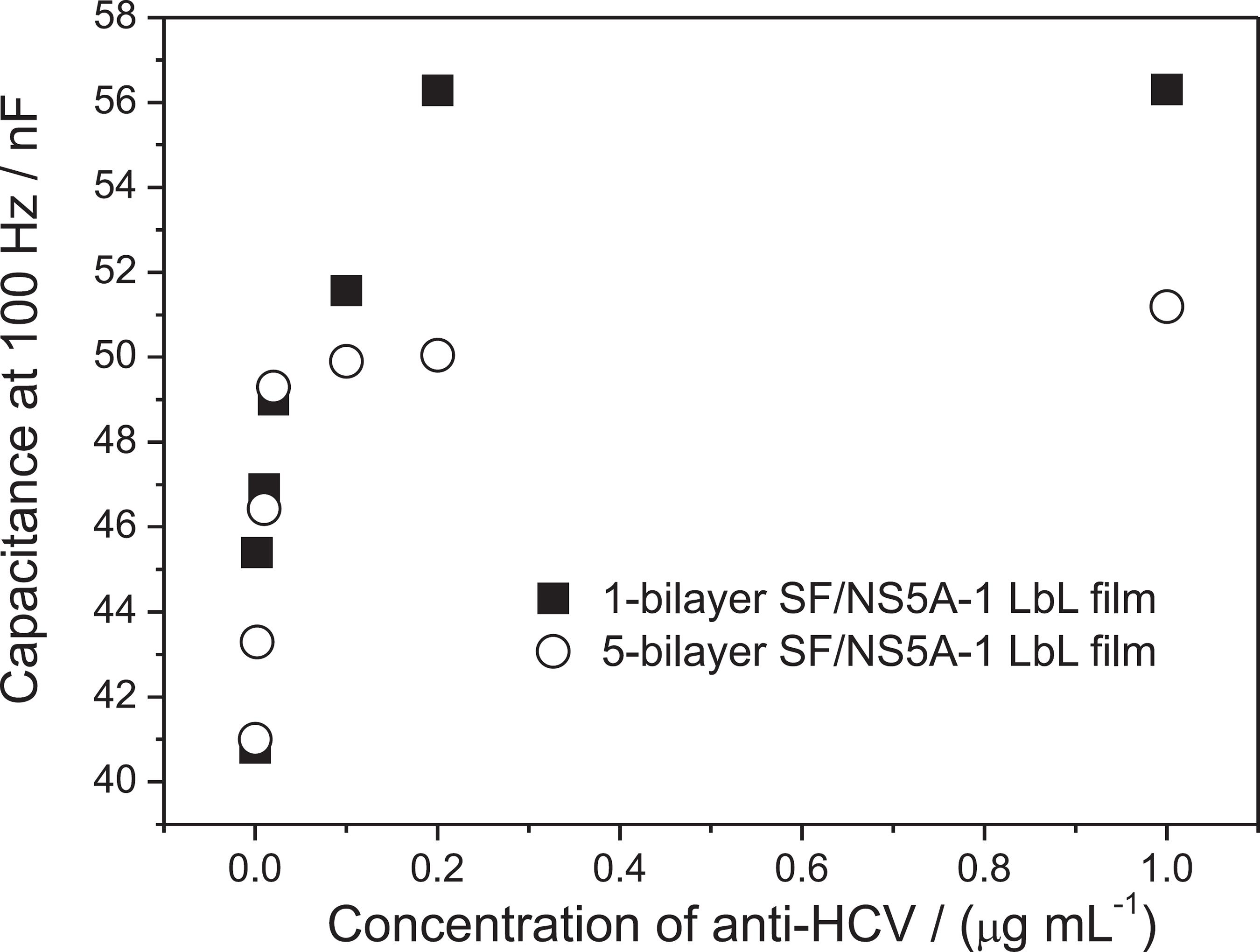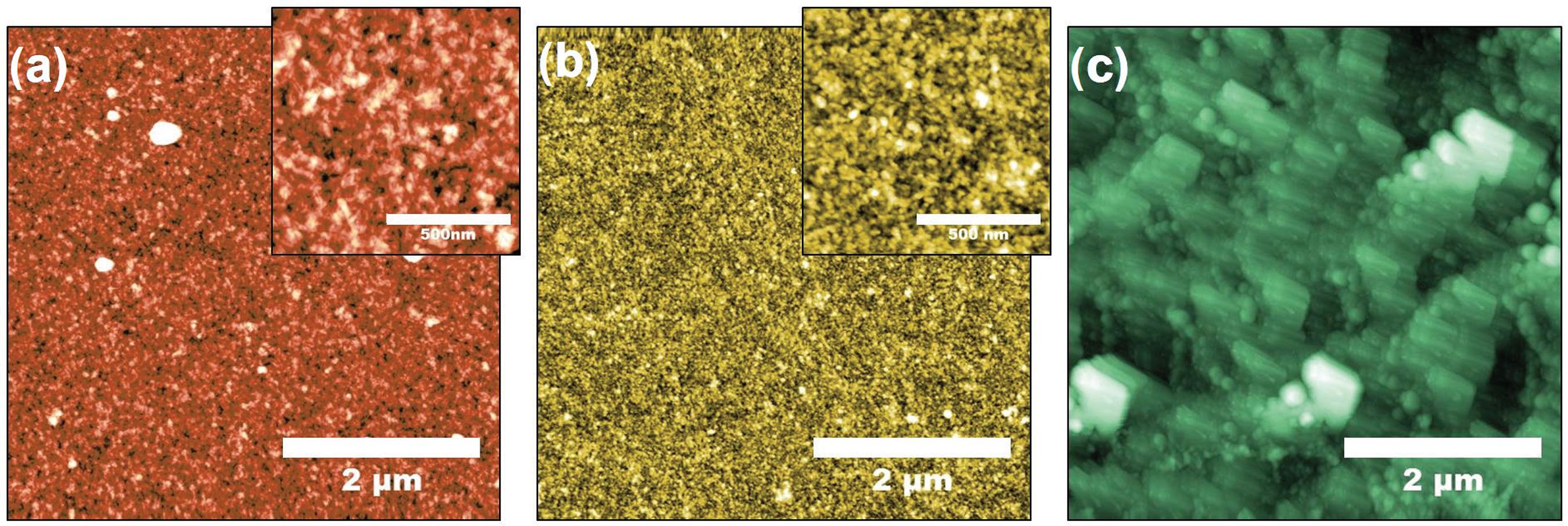Immunosensors based on impedance spectroscopy for diagnosing hepatitis C are reported where the sensing units were made with the antigenic peptide PPLLESWKDPDYVPPWHG (NS5A-1) derived from the NS5A protein of the hepatitis C virus (HCV) immobilized in layer-by-layer (LbL) films with silk fibroin (SF) and deposited on gold interdigitated electrodes. The electrical response of the sensing units varied upon immersion into solutions containing the antibody anti-HCV owing to the biomolecular recognition of NS5A-1. This was associated with morphological changes on the LbL films caused by adsorption of NS5A-1 and inferred from atomic force microscopy images. Buffer solutions with different anti-HCV concentrations down to 2 ng mL-1 could be clearly distinguished by analyzing the impedance spectroscopy data with a multidimensional projection technique. The specificity toward anti-HCV antibodies was confirmed in control experiments where no significant changes in the electrical response were measured by exposing the sensing units to solutions containing an anti-human immunodeficiency virus (HIV) antibody. The high sensitivity and selectivity of the units made with LbL films demonstrate the feasibility of measuring electrical impedance as an immunosensing strategy to detect hepatitis C.
Keywords:
immunosensor; layer-by-layer film; antigenic peptide; hepatitis C; impedance spectroscopy





